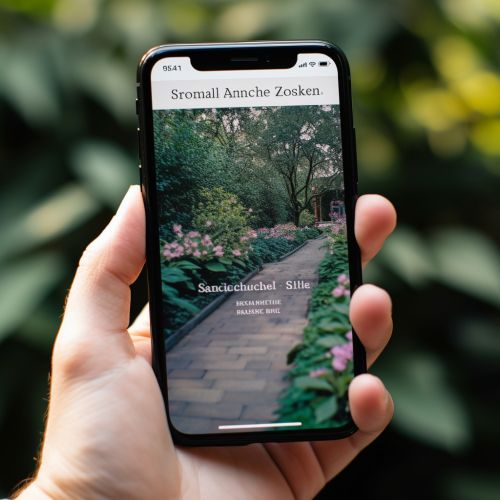Mobile Web Design
Introduction
Mobile web design is a practice of creating websites that are suitable for viewing on mobile devices. This involves designing websites that can adapt to the smaller screen sizes and touch-based interfaces of mobile devices, such as smartphones and tablets. Mobile web design is a crucial aspect of web design as it ensures that websites are accessible and usable on a wide range of devices.
Evolution of Mobile Web Design
The need for mobile web design emerged with the advent of smartphones. Early mobile web designs were often separate versions of desktop websites, typically with reduced content and functionality. This approach, known as m-dot or mobile-specific websites, was popular in the early days of mobile web browsing when devices and their browsers were less capable. However, it often resulted in a disjointed and frustrating user experience.
The introduction of responsive web design (RWD) in 2010 marked a significant shift in mobile web design. RWD uses flexible layouts, images, and CSS media queries to create websites that automatically adjust to the screen size of the device on which they are viewed. This approach allows for a consistent user experience across devices and has become the standard for mobile web design.


Principles of Mobile Web Design
Mobile web design is guided by several principles aimed at ensuring a positive user experience on mobile devices. These principles include:
- Simplicity: Mobile screens are smaller than desktop screens, so it's essential to keep the design simple. This involves reducing clutter, using clear and concise language, and focusing on the most important information and functions.
- Usability: The design should be easy to use on a mobile device. This includes making sure buttons and links are large enough to be easily tapped with a finger, and that the layout of the page is logical and intuitive.
- Speed: Mobile users often have slower internet connections than desktop users, so it's important to ensure that the website loads quickly. This can be achieved by optimizing images, minifying code, and using server-side caching.
- Responsiveness: As mentioned earlier, responsive design is a key principle of mobile web design. It ensures that the website looks good and functions properly on all devices, regardless of screen size.
Techniques in Mobile Web Design
There are several techniques that are commonly used in mobile web design. These include:
- Fluid Grids: This technique involves designing the layout of the website using relative units, like percentages, instead of absolute units like pixels. This allows the layout to adjust to the screen size of the device.
- Flexible Images: Images are sized in relative units to prevent them from displaying outside their containing element.
- Media Queries: These are used in CSS to apply different styles and layouts to a website at different screen sizes.
- Mobile First Design: This approach involves designing the website for mobile devices first and then scaling up for larger screens. This ensures that the website is optimized for mobile viewing.
Challenges in Mobile Web Design
Despite the advancements in technology and design techniques, mobile web design still presents several challenges. These include:
- Device Diversity: There is a wide range of mobile devices with varying screen sizes, resolutions, and capabilities. Designing a website that works well on all these devices can be challenging.
- Performance: Ensuring that the website loads quickly and performs well on mobile devices is a significant challenge, especially considering the slower internet speeds and less powerful processors of some mobile devices.
- User Experience: Creating a user experience that is as good, if not better, than the desktop experience is a key challenge in mobile web design. This involves not only the visual design but also the functionality and performance of the website.
Future of Mobile Web Design
The future of mobile web design lies in the continued evolution of technology and design techniques. With the increasing use of mobile devices for internet browsing, the importance of mobile web design will only continue to grow.
Emerging technologies such as Progressive Web Apps (PWAs) and Accelerated Mobile Pages (AMPs) are set to shape the future of mobile web design. PWAs combine the best of web and mobile apps, offering an app-like experience in the browser, while AMPs are designed to load web pages quickly on mobile devices.
